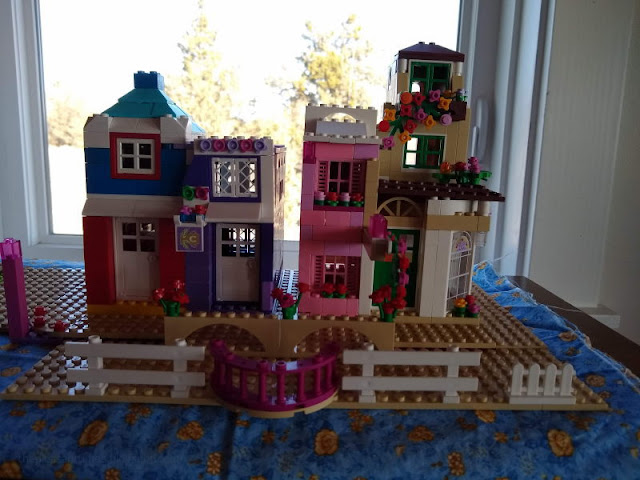After a vacation, we came back to our mostly-done house and proceeded to...go back to regular jobs, school, everyday life like other people.
We had been working to get through construction fatigue for a long time, but we finally succumbed.
When a fellow told me long ago "don't move in until every last thing is done or you will have bare bulbs for years," he was right. You shouldn't move in until it is all done, and I am proud to say that the only bare bulbs are in the attic and the crawl space where they ought to be. But, other things were left undone. Trim, for instance. Drawers and closet doors. At first, this was partly because lumber went up in price. That alone probably slipped us from barely hanging on to the project, to letting go of all construction.
When we got back from our little vacation, our "volun-told" builders plunged back into their schoolwork with a dedication I'd never seen before. You couldn't budge them until they graduated (and they got jobs that were NOT in construction).
I never wanted to pick up a paintbrush again, and my husband had one big bad work deadline after another, with other non-house things that needed to be done in-between.
Now that we had a solid roof over our heads, and a floor that did not bounce on wheels, and running water, we all wanted to do the things that we had put off during construction. Go to the events that we couldn't go to because "it was the weekend and we needed to be working." Go on trips, have tea parties, play in the river on a Saturday, and tackle lists of personal goals and enterprises.
We did all the home-y things, such as baking,
preserving,
enjoying holidays,
filling our stove to capacity.
We spent the weekends exploring,
hiking,

and enjoying the flavor of our area.
Personal projects and hobbies could now be pursued by construction-worn kids who had lived through the world's longest shop class.
Exercising in the snow is preferable to shoveling it off of construction materials.
Who cares if there are no drawers in the kitchen, when you can obviously still make feasts in the space?
It was faster to build lego houses, and plant gardens, than to think about how the kitchen backsplash is going to work out.
But not all construction was halted that winter of freedom. Shelves in the closet were a happy thought indeed, once they had been found, purchased, cut, and installed (the cost and installation of which was not quite a happy one for the builders, but they soon saw the value of my logic when they had a place to put their hats). And the attic access needed to be finished up so that no heat left the building out thataway.
We also took one more step to make sure there were no bare bulbs in the house.
But then, back to other things...
... such as enjoying spring... time to go see the migrating birds!
That long-awaited plan to float the river? Check.
No longer snowed in, we could go visiting. (No, it's not Italy. It's Oregon.)
During any one of these weeks (cough- months) I could have gathered up the paint supplies and finished the doors. Plans were always in the back (the very far recesses) of my mind as to how to stain the stair treads now that we were moved in and using the second floor constantly. But life goes on without these luxuries, and no one seemed to notice the lack. As spring turned into summer, we were drawn out-of-doors to other projects which I will post about next time.
I think I have more pictures of clouds in my photo account than I do people.

I'd rather watch this kind of Painting any day!




















































